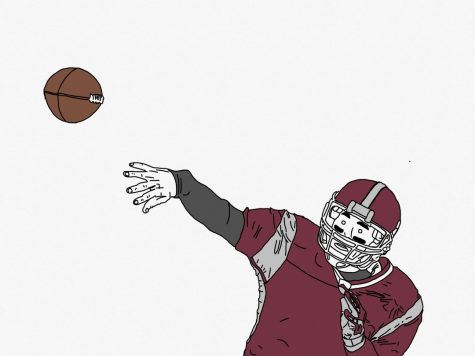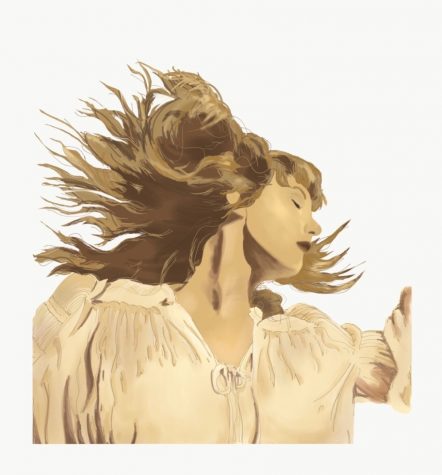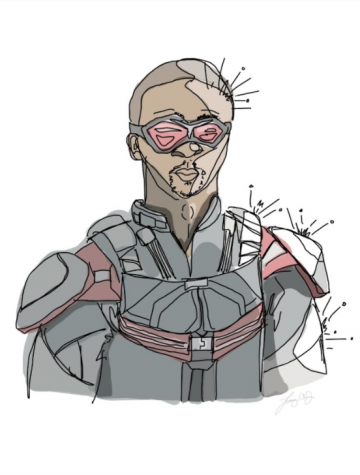In Control with Charlie Warren: beauty lies in the eye of the controller
Humans are simple creatures who enjoy simple creature comforts. The easier something is to categorize, the easier life becomes. Everything has its place; everything has a clean-cut label. Video games are no exception to the rule. From the media, to parents, to gamers themselves, the idea of video games as a uniform concept creates a single standard for what constitutes a good game. Online shooters like “Fortnite” are conflated with artsy indie games like “Celeste” just because they fall under the wide umbrella of “gaming.” Disparate games like those are compared on subjective rating scales by consumers and critics, and when a verdict is delivered, nobody is happy. “That score was way too high!” some clamor, while their online opponents respond by operationalizing an obnoxious observation on their post. Overcoming this sense of tribalism is a daunting task, but the solution to the crisis may be deceptively simple. Allow me to riddle you this: what do you like? Who cares what the lion’s den of the internet thinks?
In the spirit of individuality, I would like to introduce my primary litmus test for what makes a good game: immersion. I believe that the purpose of media is to serve as an escape from the daily grind of life through creating an engaging experience and establishing a unique aesthetic, thereby immersing the player in a different world. Before going any further, I think that it is of the utmost importance to dispel the notion that realistic graphics and smooth performance are the end-all-be-all standards for immersion. Both of these elements definitely contribute to the overall experience, but as I gaze out over a majestic, otherworldly vista as an orchestral score swells behind me, the last things that I am thinking about are the slightly muddy textures in the distance or the infinitesimally small frame drop I experienced five minutes ago. After all, I am exploring far-off worlds in the shoes of a destined hero, so I have bigger fish to fry.
This serves to prove a bigger point: gameplay cannot exist in a vacuum. If I were to strip away the vibrant colors and sweeping score of any game, all I would be left with are a series of routine tasks for a world that I would no longer care about. From “Animal Crossing” to “Doom,” every game adheres to this logic. So what is it about music and art direction that can make or break a game?
Music takes the existing structure provided by the game’s basic framework and takes it to the next level by humanizing characters, locations, and stories. Koji Kondo’s theme for level 1-1 in the original “Super Mario Bros.” uses a simple and upbeat melody to subliminally communicate to the player what kind of character Mario is. Today, Mario is Mr. Video Game himself, but back in the mid-1980s, having music build the Mario brand was of the utmost importance. The success of the 1-1 theme demonstrated that video game music could be more than a repetitive melody played on loop whilst the player focused on other things in the game. If anything, it needed to be just as dynamic as moment-by-moment gameplay and encompass characters and crucial story moments as well. As the player begins to take stock of the songs that serve to personify the locations, characters, and story of a game, they grow emotionally attached to them. As a result, a lilting piano rendition of the villain’s theme during a cutscene is enough to send chills down the player’s arm and chills up their spine. This reprisal of past themes is known as a leitmotif, and I absolutely adore this video game trope in games like “Undertale” and “Hollow Knight.” However, none of this should serve to undercut the importance of one-off tracks in gaming, either. “One-Winged Angel” in “Final Fantasy 7” and “Snake Eater” in “Metal Gear Solid 3” are fantastic instances of single boss themes setting the mood for a battle. “One-Winged Angel” was one of the first songs in video game history to use lyrics, and the Latin chorus that plays over the hectic and downright evil instrumentation reminds the player of how powerful the boss (Sephiroth) is and how puny they are in relation. On the other side of the spectrum, “Snake Eater” is a slow and melancholy song that reflects a solemn duel between two reluctant combatants for a cause larger than themselves. These emotions are far too complex to be conveyed visually or through dialogue; only music can accomplish these goals.
Art is subjective, that much is clear. This statement is usually presented in a negative light, but I would argue that this human tendency is anything but. In fact, art’s subjectivity allows for some people to find beauty where others do not. When it comes to games, I tend to prefer artwork that errs on the side of the abstract and vibrant, but a little bit of grungy realism (especially in single-player games) never rubs me the wrong way. However, what really makes video game art special is the way in which it builds settings. Imagine a simple, cubical building set atop a grassy field. It has a door in the front, and perhaps a window or two on the sides. Now set a series of Greco-Roman colonnades astride the entrance to the building and layer it with interwoven vines and cracks. Sprinkle a couple of tablets adorned with cryptic symbols around the yard, and add some steam pouring out of the building, inviting you to enter the ancient bath house inside. This artistic process is generalizable to most other mediums, but in video games, the level of immersion provided by environments is a must-have in order to preserve player engagement. If there is a distinct lack of care put into in-game environments, then the player has no incentive to explore every nook and cranny of the world and have a fulfilling experience with the game.
Art and music in games serve as the aesthetic meat upon the bones of gameplay, and neither can exist without the other. While it is oftentimes difficult for development teams to really get creative with these elements of style, any amount of effort can go a long way to create an environment that transports the player to the worlds they can only ever dream of. To misquote the legendary Reggie Fils-Aimé, “If it’s not beautiful, why bother?”
Hello there! Our goal is to provide relavent, engaging journalism for readers of all ages. Your donation will support the student journalists of the Wolfpacket at Claremont High School, and will allow us to purchase equipment, print our monthly issues, and enter in journalism competitions. We appreciate your consideration!

Charlie Warren is a senior at Claremont High School, where he is currently an assistant sports editor with the Wolfpacket. In terms of extracurriculars,...












